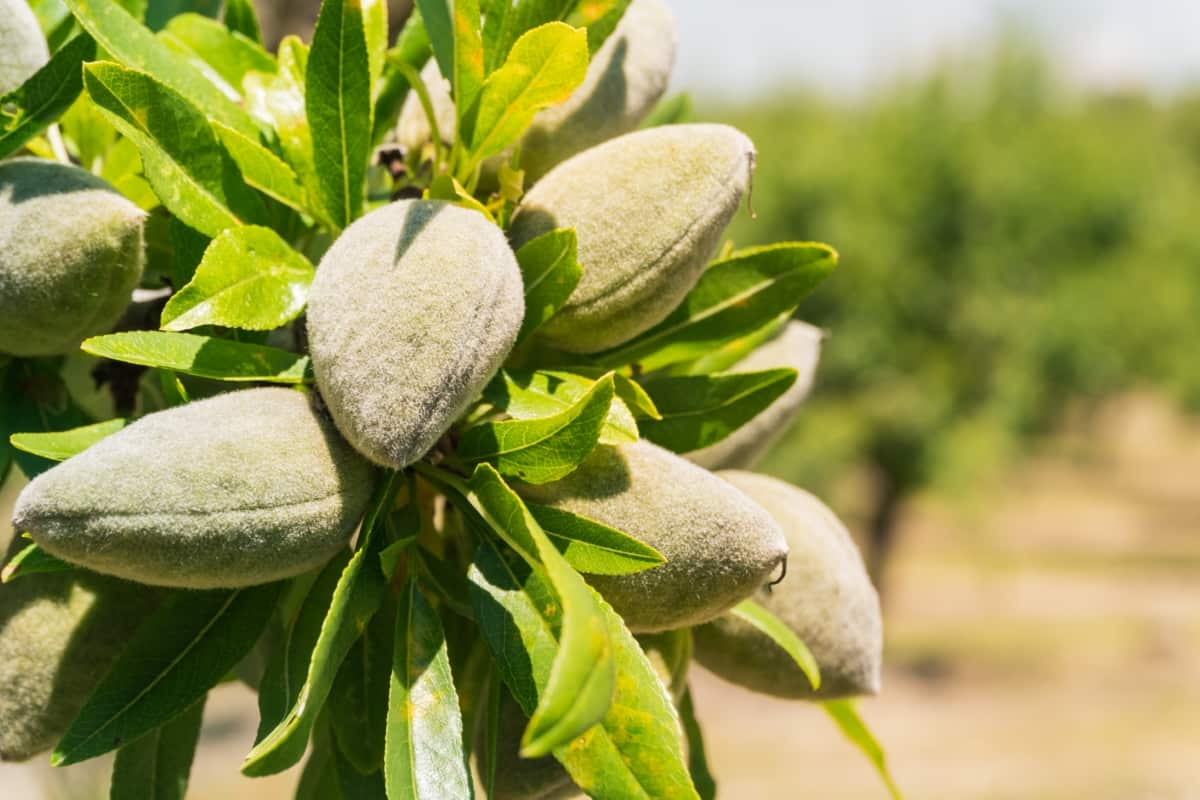Almond cultivation
Almond cultivation is a significant agricultural activity, especially in regions with a Mediterranean climate. The process requires specific environmental conditions and careful management to ensure a high yield of quality nuts.
Climate Requirements
Almond trees thrive in a Mediterranean climate, characterized by:
- Long, hot, and dry summers: This is crucial for the proper ripening of the nuts.
- Mild, wet winters: Almond trees need a specific amount of "chill hours" during their dormant period to break bud dormancy and ensure a strong bloom. This is typically an accumulation of hours between 32°F and 45°F (0°C to 7°C).
- Avoidance of late frosts: Almond trees bloom very early in the spring, typically from mid-February to mid-March. Frost during this period can severely damage the blossoms and a half-hour of temperatures below 25°F (-4°C) can be devastating to the crop.
- Minimal rainfall during flowering: Rain and humid conditions during the bloom period can hinder bee activity and pollination, leading to a poor fruit set. It also increases the risk of fungal and bacterial diseases.
Soil and Land Preparation
- Soil Type: Almonds are adaptable but perform best in deep, fertile, well-drained loamy soils. They do not tolerate heavy or poorly drained soils, which can lead to fungal diseases and root rot.
- pH Level: A slightly acidic to alkaline soil pH, ranging from 6.0 to 7.5, is ideal.
- Drainage: Excellent drainage is paramount. Almond trees are highly sensitive to waterlogged conditions.
- Land Preparation: Before planting, the land should be cleared of debris and weeds. A soil test is recommended to determine the pH and nutrient content. Tilling the soil helps to loosen it and improve aeration for root development.
Planting and Maintenance
- Planting Material: While it is possible to grow an almond tree from seed, it is not recommended for commercial cultivation as the resulting trees may not be true to the parent and will take longer to bear fruit. The best approach is to start with a grafted sapling from a reputable nursery.
- Pollination: Most almond varieties are not self-pollinating. To ensure a good harvest, it is essential to plant at least two different compatible almond cultivars that can cross-pollinate. Honeybees are the most common and effective pollinators and are often introduced into orchards during the bloom period.
- Watering: Although drought-tolerant, almond trees require consistent irrigation, especially during the dry summer months. Drip irrigation is a highly efficient method. Young trees need to be watered regularly, keeping the soil moist but not soggy.
- Fertilization: Regular soil tests help determine the specific nutrient needs of the trees. A balanced fertilizer application, especially nitrogen, phosphorus, and potassium, is crucial for strong growth and nut production. Fertilization is typically done in the spring.
- Pruning: Proper pruning is essential for maintaining the tree's health, shape, and productivity. It helps to improve sunlight penetration and airflow within the canopy, which is vital for both yield and disease prevention.
Pests and Diseases
Almond trees are susceptible to a variety of pests and diseases, which require diligent management:
- Pests: Common pests include the Navel Orangeworm, Peach Twig Borer, spider mites, and various borers and leaf-footed bugs.
- Diseases: Fungal diseases like Shot Hole, Anthracnose, and Alternaria Leaf Spot are prevalent, especially in humid conditions. Other issues include Verticillium Wilt and bacterial spot.
Integrated Pest Management (IPM) strategies, which combine cultural practices, biological controls, and chemical treatments when necessary, are vital for effective pest and disease control.
Harvest
Almond nuts are ready for harvest in late summer and early fall when the outer hull splits open and the shell turns a straw-yellow color. The nuts are typically shaken from the trees mechanically and then allowed to dry on the ground for several days before being collected and processed to remove the hull and shell.
Download Pdf


Get in Touch




